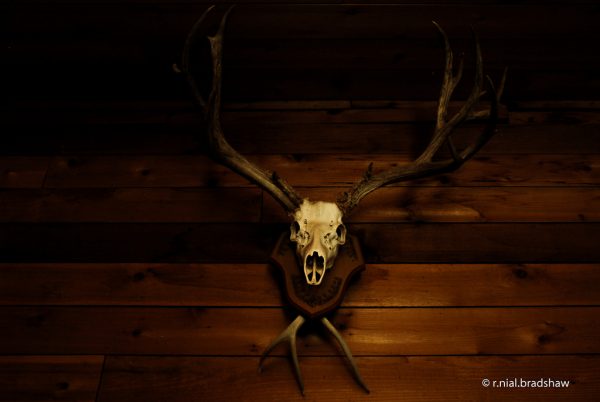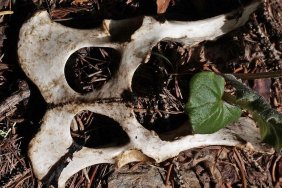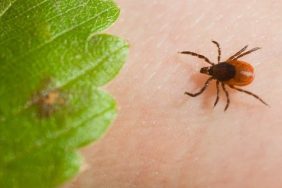An alarming amount of hunters have been facing an issue since the birth of taxidermy. To taxidermize or not to taxidermize. You may have shot the biggest buck in your life. Maybe it was even the new state record. But if you are broke, then the memory of that buck may reside in nothing but a photo, a story and a skull that has been mounted to the side of your shed with the use of two deck screws.
Taxidermy can be an expensive endeavor. But that is not always the case. A European mount can be the answer to this problem for even the most impoverished of hunters. A European mount is a method of taxidermy where the animal’s skull is mounted often on a plaque. With this method there is no preservation of skin required. In high school, I made a hefty chunk of change creating beautiful European mounts. Between my father and I, we must have handled hundreds of skulls. Here are four easy steps to do it correctly.
caring for your animal’s head
Cleaning your skull can be a tedious, and sometimes gross, task. This usually depends on two things – the skull-cleaning method you are using and how the head has been stored since the expiration of the animal. Treat the head like it is a piece of meat that you plan to eat. Put it in the cooler or freezer. Keeping the skin on for a while doesn’t hurt anything either. The number one thing you should be wary of I leaving it exposed to the heat and flies. Doing so will cause the meat to rot and it will attract flies, thus filling you head with maggots. Rotting flesh and maggots make for a disgusting skinning and cleaning process that may make you want to saw off the antlers and call it a day.
clean the skull
There are many ways to remove the flesh from the head of your game. The two most popular methods are boiling the skull and using Dermestid beetles to clean it – beetles that eat decaying meat at an extremely fast pace. Some folks even bury their heads for long periods of time, allowing nature to take its course on the decaying head, but this method takes much too long for me. Be sure that you remove all the skin on the head, before attempting to use any of these methods. This will speed up the cleaning process incredibly. Once all the flesh, brains, and eyes are removed from the head, then you are ready for the next step.
bleach the skull
The skull has been cleaned of all flesh, meat, and organs. But the skull is dark, discolored, and maybe a bit dirty. It doesn’t look exactly how you expected bare bone to look, nor would you want to put a skull like this on display. It’s time to bleach your beautiful trophy. The most effective way to do this is with hydrogen peroxide and powdered bleach. Large amounts of both products can be found at any hair and salon supply store. Combine the two contents, in a small bowl or container, until the mixture is the consistency of dish soap or toothpaste. The mixture can be of any consistency that will allow you to spread a layer over the surface area of the skull. Do so carefully, being sure not to get any bleach on the antlers, as you probably want them to remain their natural brown color. Repeat this process until the skull is completely white. If the skull seems to be extremely greasy and will not become completely white at some spots, a problem often with bear or pig skulls, apply a thin layer of white glue to the skull.
mount the skull
This is where it gets fun. Your skull is white and beautiful. Now your creativity comes into play. What will you mount this trophy to? Where will you hang it up? And how will you commemorate the hunt? If you are good with your hands or woodworking, I suggest crafting as nice of a plaque as possible. If you want to go for something a little different or simpler, yet still original and cool, go grab an old piece of wood, stain it, and cover it with a thick coat of lacquer. This will make it look old, glossy, and presentable for any location in your home or man-cave. I have found that pieces of old barn doors work extremely well for this. Sometimes imperfection is the key to perfection when it comes to European mounts. Another great feature would be to add a photograph from the hunt, to the wooden plaque. This give viewers a look into what that hunt was like for you, and what the animal looked like before it was turned into a European mount.
Photo credit:







